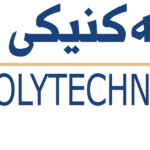- هیوا جواد تەها
- hiwa.barznji89@gmail.com
- 0750 495 6330
- ماستەرنامەی هیوا جواد تەها 2023
-
پوختەی توێژینەوەكە
ئەم توێژینەوەیە هەوڵێكی زانستییە بۆ زانینی سرووشتى گوتاری بازاڕسازیى كۆمپانیاكانى گهیاندنى خێرا لە سۆشیال میدیا له سهردهمى كۆرۆنادا، لەگەڵ دیاریكردنی پەیوەندی نێوان گوتاری بازاڕسازیی كۆمپانیاكانى گهیاندنى خێرا و سرووشتى ئامرازهكانى سۆشیال میدیا لە سەردەمی كۆرۆنا لە هەرێمی كوردستاندا. لەم توێژینەوەیەدا میتۆدی رووپێوی بهكارهێنراوە و توێژەر پشتی بە رێگای شیكردنهوهى ناوهڕۆك بهستووه، سوودیشی لە تیۆری گوتارشیكاری وەرگرتووە بۆ شیكردنەوەی گوتاری بازاڕسازی هەردوو كۆمپانیای گەیاندنی خێرا (دلیڤەری)ـی (تەڵەبات و لەزوو) لە سەردەمی كۆرۆنادا. كۆمەڵگەی ئەم توێژینەوەیە بریتییە لە هەموو سۆشیال میدیای ئەو كۆمپانیایانەی لە بواری گەیاندنی خێرا كە لە هەرێمی كوردستان كاردەكەن، نموونەی توێژینەوەكەش پێكدێت لە سۆشیال میدیای كۆمپانیاكانی (تەڵەبات و لەزوو)، كە ئۆفیسیان لە هەولێری پایتەختی هەرێمی كوردستانی عێراقە، توێژینەوەكە بەو دەرئەنجامە گەیشتووە، كە گرنگترین ئەو بابەتانەی لە گوتاری بازاڕسازی سۆشیال میدیای كۆمپانیاكانی (تەڵەبات و لەزوو) لە هەردوو پلاتفۆڕمی فەیسبووك و ئینستاگرام لە سەردەمی كۆرۆنادا تیشكیان خراوەتە سەر بریتیین لە ناساندنی خزمەتگوزاری كۆمپانیاكان و پەیامی رۆشنبیركردنی جەماوەر، هەروەها گوتاری بازاڕسازیی هەردوو كۆمپانیاش زیاتر كاركردن بووە لەسەر وروژاندنی هەست و سۆزی وەرگر لەپێناو باوەڕپێهێنان و دروستكردنی كاریگەری لەسەریان بە ئامانجی بەدەستهێنانی قازانجی زیاتر.
وشە سەرەكییەكان: گوتار، گوتارشیكاریی، بازاڕسازی، سۆشیال میدیا و كۆرۆنا.
- Erbil Technical Administrative College
- media- بەشی تەكنیكی میدیا
- میدیا
- Ashqi Mohammed Kareem
- ashqi.mohammed@epu.edu.iq
- 0750 443 1335
- Ashqi pdf
-
Hematological malignancies are among the many diseases that exhibit P53 mutations. The main aim of the present study to assess the prevalence of P53 gene mutations among Acute Myeloid Leukemia and Acute Lymphoblastic Leukemia cases. We conducted a comprehensive evaluation using P53 mutational screening through hematological changes, bone marrow aspiration reports, PCR, and gel electrophoresis in the current research to assess the P53 mutation frequencies in AML and ALL patients.
This study evaluated 61 patients of Acute Leukemia referred from Nanakaly Hospital for Blood Diseases and Cancer in Erbil-City, from July 1, 2021, to March 11, 2022. For a total of 61 patients (29 patients with Acute Myeloid Leukemia and 32 patients with Acute Lymphoblastic Leukemia), which had been selected for the study depending on the Complete Remission/Partial Remission association, we compared the CBC parameters, immunophenotyping CDs, and bone marrow reports. Of these, 40 samples (20 from AML and 20 from ALL) were followed up for DNA extraction, PCR amplification and visualized by Gel Electrophoresis.
Overall 61 patients (29 AML patients achieved CR 24(82.7%) and PR 5(17.3%) and (32 ALL patients achieved CR 25(79.3%) and PR 7(20.7%). One of the important findings of our study, the P53 gene was mutated in all of AML and ALL patients. The most frequent positive CDs in AML patients, includes (CD13, CD33, MPO, HLADR, CD64, CD117, CD34), and the mean of them are (75%, 70%, 60%, 60%, 55%, 55% and 50% respectively) , and according to CR/PR association those CDs were statistically showed significant (CD64, CD117, CD13, CD33, CD34, MPO, TdT and CD38,), p-values (<0.0001, <0.0001, 0.0012, 0.0012, 0.0067, 0.0103, 0.0209 and 0.0235 respectively). The most frequent CDs in ALL patients, includes (CD19, CD79a, TdT, HLADR, CD10, CD22 and CD34), the mean of them are (95.24%, 95.24%, 95%, 90%, 85.71%, 80% and 50% respectively), and according to CR/PR association, those CDs markers(CD2, CD10, CD19, CD22, CD34, CD79A and TdT) were statistically showed significant, with p-values (<0.0001, <0.0001, <0.0001, <0.0001, <0.0001, 0.0003 and 0.0124 respectively). The majority of bone marrow aspirates in AML cases during the post-induction stage were primarily hypercellular(100%) in CR group and hypercellular (85%) in PR group, and the p-value depending on CR/PR ratio showed mildly significant for Cellular fragments (0.0068), also the blast percentages were significant. For instances of ALL, the bone marrow aspiration reports were primarily hypercellular(100%) in CR group and hypercellular (45%) in PR group, and the p-value of CR/PR ratio showed strongly significant(<0.0001). The present study identified by Sanger sequencing, 28 mutations from 17 mutated samples(from 20 samples of AML and 20 samples of ALL), which includes, 17 mutations from 10 samples of AML and 11 mutations from 7 samples of ALL.
We conclude that P53 were highly mutated in AML and ALL cases and immunophenotyping CD markers significantly expressed in acute leukemias, also the reports showed the hypercellular bone marrow.
- Erbil Technical Health College
- Medical Laboratory Technology Department
- Hematology
- Amanj Jamal Azeez
- amanj.jamal1981@gmail.com
- 0750 430 4363
- FINAL AMANJ THESIS RECOVERY 99
-
SUMMARY
The current study aimed to investigate the impact of a static magnetic field (SMF) exposure on uropathogenic Escherichia coli colony morphology, cell growth, viability, biochemical characteristics, antibiotic susceptibility and gene expression from urine clinical specimens.
Twenty- five E.coli is being isolated clinical samples obtained from urine of patients attended to different hospitals (Erbil, Rizgary, and Rapareen Teaching Hospital in Erbil city/Iraq. All isolates were identified using cultural, morphological, biochemical characteristics, and the using Vitek 2 system for identification.
The magnetic field created manually with the power of (0.04, 0.08, 0.12, 0.16T) and have been measured the force in the Physics Department of the College of Education at the University of Salahaddin in Erbil/ Iraq. The bacterial culture in broth media exposed to different force of magnetic field.
Our findings revealed that exposure to SMF (0.04, 0.08, 0.12, 0.16T) decreased optical density at 620 nm over the course of 24 hours. Also finding exposed bacteria to different magnetic force been altered bacterial biological activity on sugar fermentation and antibiotic sensitivity due to mutation.
In addition, the Vitek 2 system has been used for measuring the antibiotic susceptibility of bacteria against different magnetic fields. After 24 hours of exposure, the minimum inhibitory concentration (MIC) value was calculated. The antibiotics Ciprofloxacin, Trimethoprim/sulfamethoxazole, Ceftazidime, Cefepime and Aztreonam converted from sensitive to resistant compared with negative control (unexposed).
Escherichia coli isolates were put through a PCR procedure using the appropriate primer 16SrRNA to establish their identity as well as other primers TEM1.CTXM-1 SHV genes that encode for a multidrug-resistant strain MDR.
The interpretation of the differential expression of the TEM1.CTXM-1, SHV, and 16SrRNA genes under different SMF exposure revealed that the expression level of the 16SrRNA amplification PCR product remained constant throughout the exposure and thus can be used as a reference gene for the observation of the differential gene expression of E. coli. Notably, the amplified PCR products of TEM1.CTXM-1, and SHV genes were decreased after different SMF exposure as compared to non-exposed (control) that’s lead to increase antibiotic susceptibility. The TEM1.CTXM-1 genes were subjected to a genomic study; (Bio Edit V.7.0.5) was used to evaluate the quality of their sequencing data. Utilizing NCBI- BLAST, homology, insertions - deletions, stop codons, and frame shifts were investigated. Laboratory or query sequences were examined and aligned with a second biological sequence to identify a greater degree of similarity and nucleotide variation with other targets.
- Erbil Technical Health College
- Medical Laboratory Technology Department
- Microbiology
- Mohammed Qader Mustafa
- mohammad.qadr@tiu.edu.iq
- 0750 902 3737
- Immunophenotyping and IL-18 Promotor Gene Polymorphism in Acute Lymphoblastic Leukemia in Erbil - Print
-
Acute Lymphoblastic Leukemia (ALL) is a malignant neoplasm of the hematopoietic system that primarily affects children. The pathogenesis of ALL is complex and multifactorial, involving various genetic, epigenetic, and immunological factors. This study aimed to investigate ALL patients' immunophenotyping and DNA polymorphism of the IL-18 gene (rs1946518) and explore their potential clinical implications.
In this study, a total of 51 patients with ALL were enrolled. The average age of diagnosis was 8.7 years. Out of these 51 patients, 32 were selected for molecular studies, while 10 children were included as control subjects to analyze further the molecular data, 10 random samples out of the 32 PCR products were chosen for Sanger sequencing, and their clinical characteristics, including age, sex, and subtype of ALL, were recorded. A complete blood count (CBC) was performed to assess the hematological parameters of the patients. The expression of several CD markers, including cTDT antigens, human leukocyte antigen-DR(HLA-DR), cytoplasmic myeloperoxidase, CD117, cCD79a, CD56, CD34, CD33, CD22, CD19,CD11b, CD10, CD7,cCD3, CD2, was analyzed using flow cytometry. Genotyping of the samples for IL-18 gene polymorphisms was conducted through Tetraprimer Amplification Refractory Mutation System Polymerase chain reaction(T- ARMS PCR). Also, the promoter region of the IL-18 gene was amplified through Polymerase Chain Reaction (PCR), and any mutations or Single Nucleotide Polymorphisms (SNPs) was analyzed via Sanger sequencing. Additionally, genotyping of the samples for IL-18 gene polymorphisms was conducted through Tetraprimer Amplification Refractory Mutation System polymerase chain reaction (T-ARMS PCR).
VI
The results showed that most patients (75.8%) had pre- or common B-ALL, while 12.1% had T-lymphoblastic leukemia (T-ALL) , 9.1% patients had Pro- B ALL and 3% patients had Burkitt's lymphoma. Significant differences were observed in CD marker expression between patients with different CD expressions, with CD19+, CD79a+, and CD10 associated with a higher blast percentage. There seemed to be variations in CD marker manifestation among the age groups below 15 and above 15 years. CD79a, CD22, CD19, CD10, TdT, HLA-DR, and CD123 were commonly expressed positive CD markers, whereas CD45 had moderate to low expression and was not associated with these markers. In terms of IL-18 gene polymorphisms, 100% of the control population had homozygous wild-type alleles, while six patients (18.75%) had heterozygous (CA) alleles, and four patients (12.5%) had homozygous (AA) alleles. The remaining 68.75% had 2 polymorphic alleles on the promoter’s region. The current study identified 23 mutations through Sanger sequencing for 10 random samples in the promoter region of the IL-18 gene, including SNPs, insertion, deletion, and duplication. There were 11 types of variation, with 14 being sense and 9 being non-sense mutations. The study also discovered 3 previously unknown (Novel) SNPs, which increases our knowledge of genetic variation in the IL-18 gene.
In conclusion, this study highlights the importance of immunophenotyping and DNA polymorphism analysis in understanding the pathogenesis of ALL and its potential impact on patient management. The findings suggest that specific CD markers and IL-18 gene polymorphisms may be associated with a higher risk of developing ALL. Further research is needed to investigate these associations in more detail. This study provides valuable insights into the molecular and immunological mechanisms underlying ALL and lays the groundwork for future studies.
- Erbil Technical Health College
- Medical Analysis
- Hematolog


